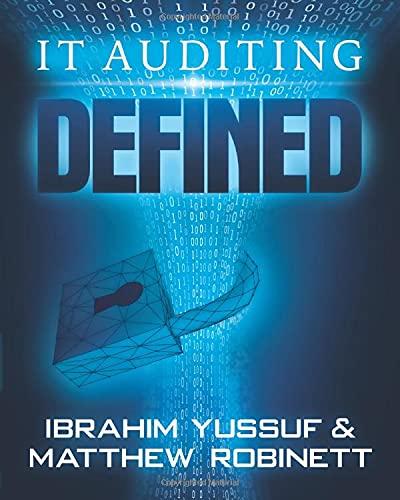Question
Occupational fraud comes in many shapes and sizes. The fraud at Rite Aid is one such case. On February 10, 2015, the U.S. Attorneys Office
Occupational fraud comes in many shapes and sizes. The fraud at Rite Aid is one such case. On February 10, 2015, the U.S. Attorneys Office for the middle District of Pennsylvania announced that a former Rite Aid vice president, Jay Findling, pleaded guilty to charges in connection with a $29.1 million dollar surplus sales/kickback scheme. Another former vice president, Timothy P. Foster, pleaded guilty to the same charges and making false statements to the authorities. Both charges are punishable by up to five years imprisonment and a $250,000 fine.
The charges relate to a nine-year conspiracy to defraud Rite Aid by lying to the company about the sales of surplus inventory to a company owned by Findling when it was sold to third parties for greater amounts. Findling would then kick back a portion of his profits to Foster.
Findling admitted he established a bank account under the name Rite Aid Salvage Liquidation and used it to collect the payments from the real buyers of the surplus Rite Aid inventory. After the payments were received, Findling would send lesser amounts dictated by Foster to Rite Aid for the goods, thus inducing Rite Aid to believe the inventory had been purchased by J. Finn Industries, not the real buyers. The government alleged Findling received at least $127.7 million from the real buyers of the surplus inventory but, with Fosters help, only provided $98.6 million of that amount to Rite Aid, leaving Findling approximately $29.1 million in profits from the scheme. The government also alleged that Findling kicked back approximately $5.7 million of the $29.1 million to Foster.
Foster admitted his role during the guilty plea stage of the trail. He voluntarily surrendered $2.9 million in cash he had received from Findling over the life of the conspiracy. Foster had stored the cash in three 5-gallon paint containers in his Phoenix, Arizona, garage.
Assume you are the director of internal auditing at Rite Aid and discover the surplus inventory scheme. You know that Rite Aid has a comprehensive corporate governance system that complies with the requirements of Sarbanes-Oxley and the company has a strong ethics foundation. Moreover, the internal controls are consistent with the COSO framework. Explain the steps you would take to determine whether you would blow the whistle on the scheme applying the requirements of AICPA Interpretation 102-4 (image provided below)

What steps must you take to be eligible to blow the whistle to the SEC under Dodd-Frank Financial Reform Act?
Would you inform the external auditor about the fraud? Explain.
================================================================
Requirements:
Explain your answer and NO PLAGIARISM ANSWER!!!!
Step by Step Solution
There are 3 Steps involved in it
Step: 1

Get Instant Access to Expert-Tailored Solutions
See step-by-step solutions with expert insights and AI powered tools for academic success
Step: 2

Step: 3

Ace Your Homework with AI
Get the answers you need in no time with our AI-driven, step-by-step assistance
Get Started


